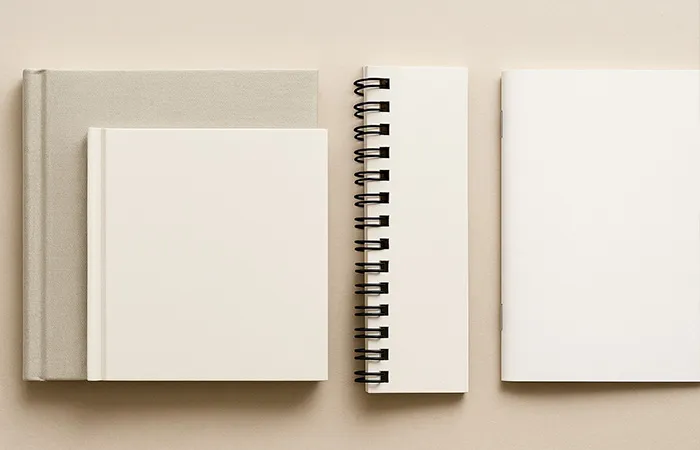
Choosing the right binding for your book or brochure is more than an aesthetic decision—it directly affects the cost, durability, usability, and perception of your publication. Whether you’re printing a product catalogue, an art book, a training manual, or a company profile, understanding each binding option helps you align your goals with your budget and expected lifespan. Below are essential techniques and comparisons to guide your binding decisions.
- Saddle-stitched binding (stapled): This is the most economical option for thin documents (typically up to 80 pages). It’s fast, lightweight, and cost-efficient. Perfect for event programs, lookbooks, or short reports—but not ideal for long-term use or heavy handling.
- Perfect binding (glued spine): Offers a more polished look, ideal for books with 40+ pages. The squared spine allows for titles on the edge and easy shelving. It’s more affordable than hardcover and widely used for magazines, manuals, and self-published books.
- Spiral or wire-o binding: Suitable for workbooks, notebooks, and training guides. Allows the document to lie flat when open. Though not as elegant, it’s highly practical—especially for instructional content. Cost varies depending on size and material used for the coil.
- Hardcover (case binding): The most durable and high-end option, ideal for art books, premium publications, or limited editions. More expensive and heavier to ship, but it offers long shelf-life and perceived value. Includes glued inner pages with a rigid cover board and optional dust jacket.
- Use binding-compatible formats: Standard formats like A5 and A4 are compatible with all binding types and help reduce production costs. Avoid non-standard sizes, which may require custom setups, trimming, or incompatible spine widths.
- Match binding to page count: Saddle-stitching works best with 8–80 pages. For 80–200 pages, perfect binding is ideal. Over 200 pages may require sewn binding or hardcover. Selecting the right type ensures proper opening, durability, and user comfort.
- Account for spine thickness: Binding affects layout design. Perfect-bound and hardcover books require accurate spine calculation. Don’t finalise your cover file before confirming page count and paper weight with your printer.
- Consider usage conditions: Will the brochure be handled frequently? Open flat? Shipped in bulk? Spiral or wire-o may be more durable. If it’s meant for display or sale, perfect-bound or hardcover will elevate the presentation.
- Limit decorative finishes where possible: Lamination, hot foil, or UV varnish can be visually appealing but also increase the cost and environmental impact. Stick to matte or satin finishes unless the binding type justifies added protection.
- Test with a sample: Before launching a large run, print a prototype. This allows you to assess the usability of your binding in real-life conditions—especially for catalogues or manuals that need to stay open when in use.
There’s no one-size-fits-all binding. Each type offers unique benefits depending on your priorities—cost, appearance, practicality, or sustainability. By understanding the advantages and constraints of each option, you can choose a binding that meets your goals while keeping costs aligned with your budget.
Which Binding Is Most Cost-Effective?
Saddle-stitched books are usually the cheapest to produce and ship. For books with higher page counts, perfect binding offers a great balance between price and presentation. Spiral binding can be economical for short runs or functional content. Hardcover is the most expensive but adds perceived value—ideal when selling at a premium or creating a collector’s item. Always ask your printer for price comparisons between options.
How Binding Affects Shipping Costs
Binding type affects both weight and volume. Hardcover books are heavier and bulkier, raising transport fees. Saddle-stitched and perfect-bound books are more compact and ship flatter, reducing your delivery expenses. Also consider how the binding impacts packaging—books that can lie flat are often easier and cheaper to box in bulk.
Smart Design to Match Your Binding
Adapting your layout to the chosen binding can prevent costly errors. For example, avoid placing important text near the gutter in perfect-bound books, where visibility may be reduced. For spiral-bound items, allow extra margin for the coil area. Always confirm bleed, spine width, and cover setup requirements with your printer before finalising your files.
Want Help Choosing the Right Binding?
Not sure which option best suits your book or brochure? Our team can help you assess your needs and recommend the most appropriate solution. From estimating spine size to suggesting cost-effective formats, we guide you through every step. Request a quote with your project specs and we’ll help you find the best binding for your goals and budget.
